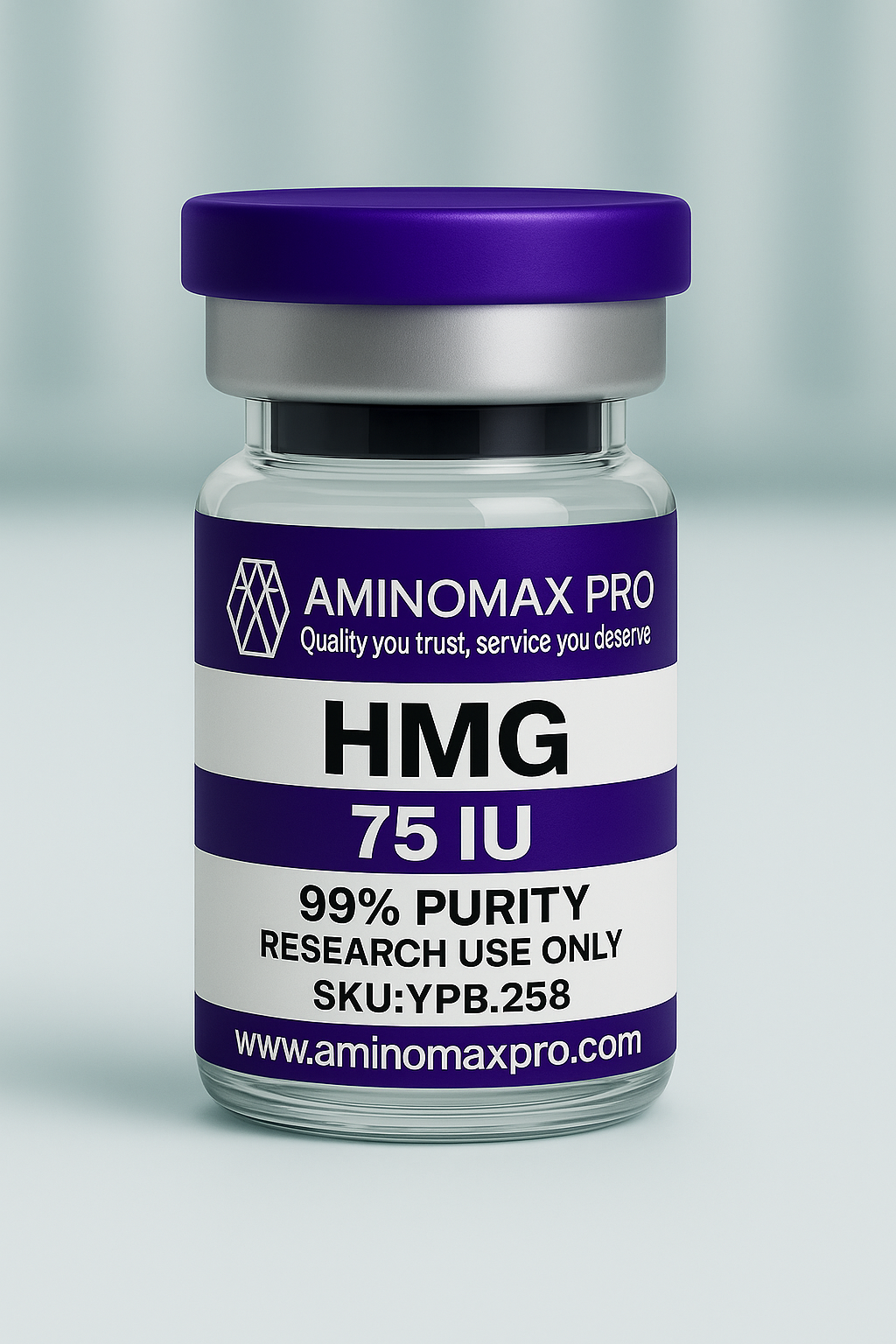Description
HMG – Advanced Biochemical Mechanism Profile
(Human Menopausal Gonadotropin; FSH/LH Glycoprotein Hormone Blend)
HMG is a purified gonadotropin complex containing biologically active Follicle-Stimulating Hormone (FSH) and Luteinizing Hormone (LH). Both components are heterodimeric glycoproteins that activate distinct but related G-protein–coupled receptors:
-
FSH → FSHR (Follicle-Stimulating Hormone Receptor)
-
LH → LHCGR (LH/Choriogonadotropin Receptor)
Both receptors are Gs-coupled GPCRs, driving adenylate cyclase → ↑ cAMP → PKA → CREB-regulated transcription.
✅ 1. FSH Signaling
Receptor Target
FSHR (Class A GPCR) — expressed in ovarian granulosa and testicular Sertoli cell models
Primary intracellular cascade
-
FSH → FSHR
-
Gs activation
-
Adenylate cyclase → ↑ cAMP
-
PKA phosphorylation
-
CREB nuclear translocation
-
Transcription of steroidogenic and gametogenic genes
Common downstream biochemical outputs
-
↑ Aromatase activity (CYP19A1)
-
↑ cAMP-responsive genes in Sertoli and granulosa cell lines
Gene targets frequently measured
| Functional Area | Genes |
|---|---|
| Steroidogenesis | CYP19A1, CYP11A1, StAR |
| Gametogenesis | FSHR, AMH, INHBA/INHBB |
| Sertoli cell support | GDNF, SOX9 |
✅ 2. LH Signaling
Receptor Target
LHCGR (Gs-coupled GPCR) — expressed in Leydig and theca cell models
Primary cascade
-
LH → LHCGR
-
Gs → Adenylate cyclase
-
↑ cAMP
-
↑ PKA activity
-
Phosphorylation of StAR (Steroidogenic Acute Regulatory protein)
-
Cholesterol import to mitochondria → steroid formation
Steroidogenic enzymes upregulated
-
CYP11A1 (cholesterol → pregnenolone)
-
HSD3B1
-
CYP17A1
-
CYP19A1 (aromatase)
Gene-level markers
| Category | Genes |
|---|---|
| Steroid hormones | StAR, CYP11A1, HSD3B1, CYP17A1, CYP19A1 |
| Receptor regulation | LHCGR |
| Anti-apoptotic pathways | BCL2, MCL1 |
✅ 3. Shared Signaling Mechanisms (FSH + LH)
-
cAMP accumulation
-
PKA activation
-
CREB phosphorylation
-
Increased transcription at cAMP-response element (CRE) promoters
-
Upregulation of steroid biosynthesis pathways
-
Modulation of mitochondrial cholesterol transport
✅ 4. Secondary Pathways
Although cAMP/PKA is dominant, research models show additional signaling:
PI3K → Akt
-
Promotes cell survival and mitochondrial stability
-
Regulates anti-apoptotic gene transcription (BCL2, BAX ratio)
ERK1/2 MAPK
-
Ras → Raf → MEK1/2 → ERK1/2
-
Drives growth and differentiation of gonadal cells
Ca²⁺-dependent signaling
-
PKA-modulated Ca²⁺ channel function supports vesicular secretion
✅ 5. Key Enzymes & Proteins in HMG Signaling
| Component | Function |
|---|---|
| Adenylate cyclase | cAMP synthesis |
| PKA | Phosphorylates steroidogenic proteins |
| CREB | Transcriptional regulation |
| StAR | Mitochondrial cholesterol transport |
| CYP11A1 / CYP17A1 / CYP19A1 | Steroid metabolism enzymes |
| HSD3B1 | Progesterone & androgen pathway |
✅ 6. Frequently Monitored Gene Panels in Studies
-
StAR, CYP11A1, CYP19A1, CYP17A1 (steroidogenesis)
-
FSHR, LHCGR (receptor expression feedback)
-
AMH, INHBA/INHBB (granulosa cell markers)
-
GDNF, SOX9 (Sertoli cell signaling)
-
BCL2/MCL1 (anti-apoptotic response)
Research-Only Use Classification
HMG is supplied exclusively for controlled in-vitro laboratory research.
It is not approved for human or animal administration, ingestion, injection, or therapeutic/diagnostic use.


